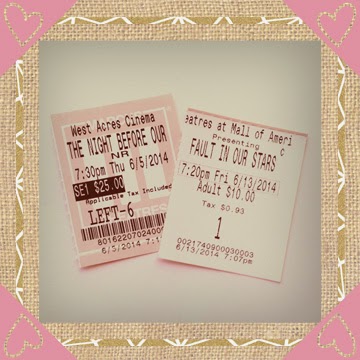Based on the novel by John Green, The Fault In Our Stars was one of the movies I was looking forward to the most for the 2014 summer movie season. The story follows Hazel Grace and Augustus Waters, two teenagers who meet at a cancer support group. Their story involves plenty of humor, sadness, and love. Having read, and loved, the book, I tried to go into the film with few expectations, in the hopes that I wouldn’t be disappointed.
Book adaptations are always a bit worrisome. There is the fear that the people behind the movie will change too much of the story, or even worse, add in completely new material. There is also the fear that the movie will flop and you will be forever disappointed that the book you loved did not get the attention you felt it deserved. Alternatively, there is the fear that the movie will become huge and what once felt special is now featured everywhere, which soon makes people refer to it as “overrated.”
Reading a book can take you to a special little place, and when that story connects to you, it feels like your own personal little world. When I read the story of Hazel Grace and Gus Waters, I felt like I was in their world. As TFIOS was preparing to come out, I wasn’t sure I was ready to have my vision change. Thankfully, the vision viewers got was pretty close to perfect.
Part of the reason the movie was so good was the casting of the three leads. Shailene Woodley was wonderful as our narrator Hazel. She was kind, cautious, and showed the raw emotions of severe pain and sadness with ease. Ansel Elgort was also quite perfect as Hazel’s Gus. His goofy grin made me chuckle throughout, which fit the cocky Gus well. Nat Wolf’s performance as Gus and Hazel’s friend Isaac brought a nice touch of comedy to help balance the other relationships in the film.
Overall, the strongest aspect of the film was the fact that the filmmakers didn’t alter much from the original story. The changes that were taken were minimal and did not affect the heart of the story.
Something I love about this page-to-screen adaptation is that the story ends here. This won’t become a trilogy or a epic saga of huge proportions. This is just a singular movie with a big heart. After many years of sequel after sequel, it is refreshing to know that this movie will be a singular piece of cinema, as much as I love these characters.
John Green is slowly becoming quite the phenomenon, with his books Paper Towns and Looking For Alaska moving forward as film adaptations. I greatly welcome seeing books like this brought to the screen because they show the trials and tribulations of teenage life and romance, even if they don’t all have a happy ending.
“It’s a good life Hazel Grace,” Gus remarks. While this movie will probably cause a few tears to flow, it will also make you feel good about life and what we all have to offer.
Book adaptations are always a bit worrisome. There is the fear that the people behind the movie will change too much of the story, or even worse, add in completely new material. There is also the fear that the movie will flop and you will be forever disappointed that the book you loved did not get the attention you felt it deserved. Alternatively, there is the fear that the movie will become huge and what once felt special is now featured everywhere, which soon makes people refer to it as “overrated.”
Reading a book can take you to a special little place, and when that story connects to you, it feels like your own personal little world. When I read the story of Hazel Grace and Gus Waters, I felt like I was in their world. As TFIOS was preparing to come out, I wasn’t sure I was ready to have my vision change. Thankfully, the vision viewers got was pretty close to perfect.
Part of the reason the movie was so good was the casting of the three leads. Shailene Woodley was wonderful as our narrator Hazel. She was kind, cautious, and showed the raw emotions of severe pain and sadness with ease. Ansel Elgort was also quite perfect as Hazel’s Gus. His goofy grin made me chuckle throughout, which fit the cocky Gus well. Nat Wolf’s performance as Gus and Hazel’s friend Isaac brought a nice touch of comedy to help balance the other relationships in the film.
Overall, the strongest aspect of the film was the fact that the filmmakers didn’t alter much from the original story. The changes that were taken were minimal and did not affect the heart of the story.
Something I love about this page-to-screen adaptation is that the story ends here. This won’t become a trilogy or a epic saga of huge proportions. This is just a singular movie with a big heart. After many years of sequel after sequel, it is refreshing to know that this movie will be a singular piece of cinema, as much as I love these characters.
John Green is slowly becoming quite the phenomenon, with his books Paper Towns and Looking For Alaska moving forward as film adaptations. I greatly welcome seeing books like this brought to the screen because they show the trials and tribulations of teenage life and romance, even if they don’t all have a happy ending.
“It’s a good life Hazel Grace,” Gus remarks. While this movie will probably cause a few tears to flow, it will also make you feel good about life and what we all have to offer.



No comments:
Post a Comment